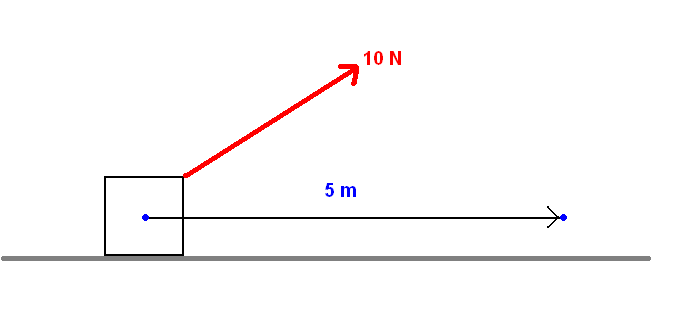Math Is Fun Forum
You are not logged in.
- Topics: Active | Unanswered
Pages: 1
#1 2008-02-26 11:04:49
- mikau
- Member

- Registered: 2005-08-22
- Posts: 1,504
need help understanding work (physics)
I'm getting kind of frusterated because I can't really see the logic in the idea of work in physics.
My book defines work, as "energy transferred to or from an object by means of a force acting on the object."
thats fine, but in order for that to make sense, you need to define some interval of time or distance during which that change occurs. Distance, it appears, is what they choose.
Now here's where I'm getting annoyed, the book claims that when a force transfers energy to or from an object, you say that work is being done on the object by the force. Thats also fine, but it again leaves out the detail of what kind of interval this change takes place in.
But the biggest annoyance with this definition is the following, consider a 100kg block that is dragged 5 meters across the floor by a force of 10 newtons as shown.

what bothers me greatly, is even though the object has no vertical component of velocity (and so has no vertical component of work) there is still a vertical component of force. In the absence of gravity, the object would accelerate upward and therefore, I strongly believe that energy is being transferred into the object by the force, but the force of gravity is transferring an equal amount of energy from the object. I put that in bold face because my entire understanding of the matter hinges on that.
But if the vertical component of force is causing energy to be transferred to the object, then definitely the vertical component of the force should contribute to the work done on the object by the force. However, sample problems in the book clearly show that this quantity must be treated as zero.
THEREFORE! I have concluded that the work done on an object by a force as it moves from point 1 to point 2 is NOT defined as the energy transferred to the object by the force, it is DEFINED to be the energy transfered to the object by the component of force in the direction of the displacement, only! It must be this by definition, and not as a result of some earlier definition. If it were only energy transferred, then the vertical component should effect the work done, even if this energy is canceled out by another force.
I have just now tried my absolute hardest to explain my understanding of the topic, my assumptions, and conclusions from them. I now hope, having exposed every bit of my understanding, someone can point out if I am correct, or in error.
Last edited by mikau (2008-02-26 11:09:53)
A logarithm is just a misspelled algorithm.
Offline
#2 2008-02-27 00:54:28
- JaneFairfax
- Member

- Registered: 2007-02-23
- Posts: 6,868
Re: need help understanding work (physics)
THEREFORE! I have concluded that the work done on an object by a force as it moves from point 1 to point 2 is NOT defined as the energy transferred to the object by the force, it is DEFINED to be the energy transfered to the object by the component of force in the direction of the displacement, only!
Thats right. Work is more usually defined as the product of the force on the object and the distance the object is moved by the force in the direction of the force. In your diagram, if θ is the angle between the 10N force and the horizontal, the work done by the force on the object is (10 N)(5 m)cosθ = 50cosθ J.
Offline
#3 2008-02-27 09:23:30
- mikau
- Member

- Registered: 2005-08-22
- Posts: 1,504
Re: need help understanding work (physics)
WHEW! thanks for clearying that up for me, Jane! ![]() It was annoying me to no end! Now it makes perfect sense and doesn't annoy me. HUZZAH! The thrill of comprehension!
It was annoying me to no end! Now it makes perfect sense and doesn't annoy me. HUZZAH! The thrill of comprehension!
A logarithm is just a misspelled algorithm.
Offline
Pages: 1